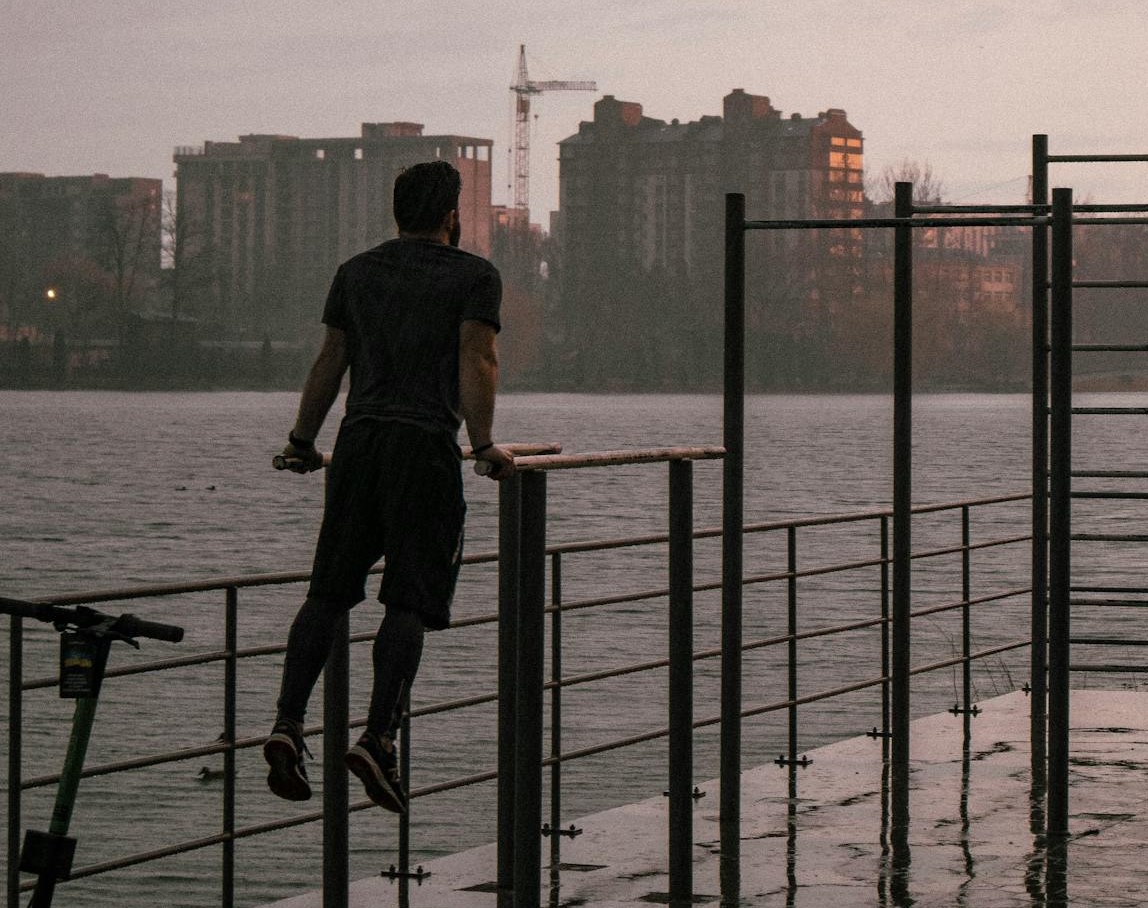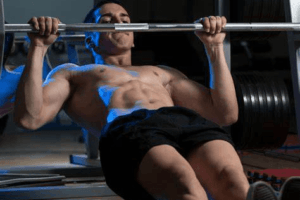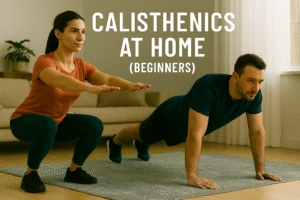Last Updated on November 21, 2025 by shawnshealth
Boost strength and fitness with this Full-body Bodyweight Workout. Follow a 5-step plan to progress, avoid plateaus, and maximize results—no gym needed!
Full-Body Bodyweight Workout: A Dynamic 5 Step Plan
A full-body bodyweight workout doesn’t have to be random or repetitive — this guide gives you a clear dynamic 5-step plan to keep progressing without hitting plateaus. Each step builds strength, endurance, and mobility in sequence, so you know exactly when and how to advance. Whether you’re starting fresh or rebuilding after time off, this structured progression takes you from the basics to a full-body challenge, all without equipment.
🧠 Build Smarter Strength at Any Age
Want to train for real-world power and lifelong capability? Explore What Is Strength? to discover the 6 elements that define true power—then dive into Senior Fitness for joint-friendly routines that support mobility, balance, and lasting strength.

What Is a Full-Body Bodyweight Workout?
A workout using only body weight to train all major muscle groups.
- Improves strength and endurance
- Increases mobility and flexibility
- Requires no equipment
- Can be done anywhere
How Can I Avoid Plateaus in Bodyweight Training?
Use progressive overload to keep improving.
- Increase reps or sets
- Slow down or speed up movements
- Try harder variations (e.g., archer push-ups)
- Reduce rest time
What Are the Benefits of Bodyweight Workouts?
Effective for building strength and fitness.
- Burns fat and boosts metabolism
- Improves balance and coordination
- Enhances core stability
- Adapts to all fitness levels
Table of Contents
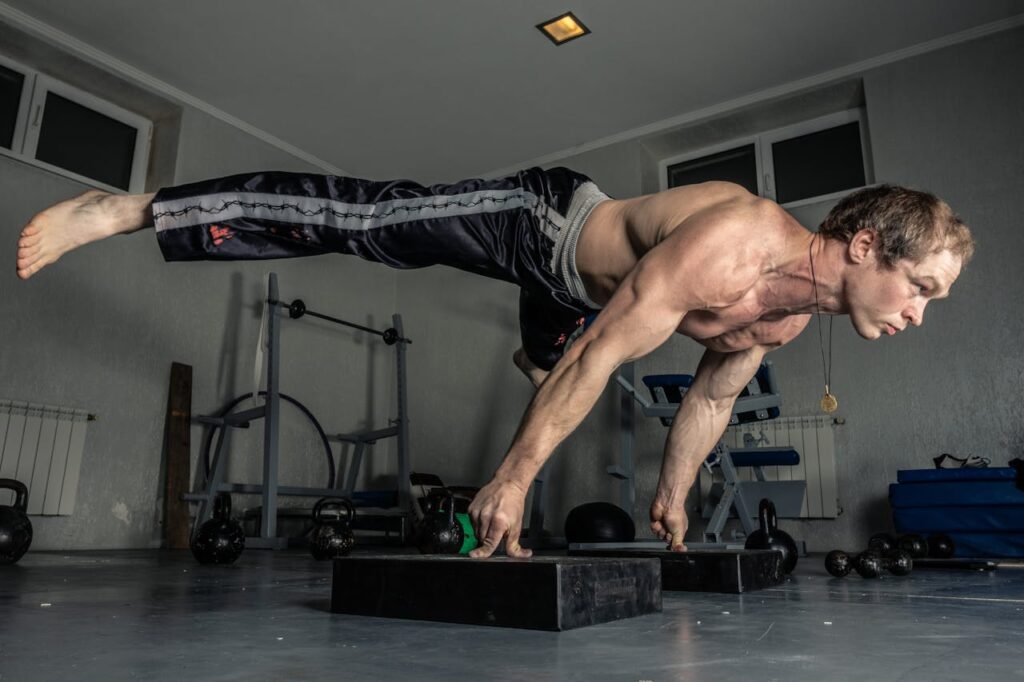
As an Amazon Associate, I earn from qualifying purchases. This means I may receive a commission if you purchase through links on this site, at no extra cost to you.
Always consult your doctor before starting any new exercise program. The author is not responsible for injuries or health issues arising from the use of this information.
Author’s Note
In calisthenics/bodyweight training, how do we know when it’s time to move to the next rep, set, or progression?
Overdoing it, repetitive overuse, pushing every single set to complete and utter exhaustion, is not the way to build, and continue to build, strength and fitness for a lifetime. Even professional athletes don’t train at the highest level all of their lives.
How can you get stronger over a lifetime?
We are simply sending a message to our body to get stronger. This is the most basic, foundational, concept of improving in strength and fitness. We are providing just enough stress to trigger a response which acts as a message to our body to adapt.
You do not build lasting strength and increased capability in a single workout. While you do want to put good consistent effort into each workout; straining, grinding out that next rep, losing form because you want to get one more, and doing this in every single workout is a great way to end up injured and/or with overuse injuries.
Just try to do a little more each week. If you follow this way of thinking, then you can gain strength and maintain capability way into old age avoiding many injuries.
So, you decide when to move forward. You determine when your body says that the current stress (reps, sets, resistance, etc) is too easy and then you can add a little bit more.
Body, “Hey! I think we can add a rep to that set for next time!”
There you go, now add a rep, change your position so that it’s more challenging (ie. floor pushup to decline pushup), and do that until you clearly know that you can do more.
You got this!
🧱 If you’re enjoying the minimalist strength focus in this workout, you’ll love our Farmer Strength Training guide—a raw, grit-based approach to building real-world power with push-ups, carries, and no-nonsense progression.
Check out this short video from Hybrid Calisthenics, for some unique but basic ideas to get started with bodyweight training and how to progress.
Why Full-Body Bodyweight Workouts Work
Bodyweight exercises are highly effective for building strength, improving flexibility, and boosting endurance. They engage multiple muscle groups simultaneously, making them efficient and scalable. Plus, they’re perfect for all fitness levels.
However, one of the key challenges with bodyweight training is knowing when to progress to harder variations. Progression ensures you continue building strength and avoid stagnation.
🧘♂️ New to bodyweight training or recovering from injury? Check out our Low Impact Calisthenics Plan for Beginners—designed to build strength gently while protecting joints and core integrity.
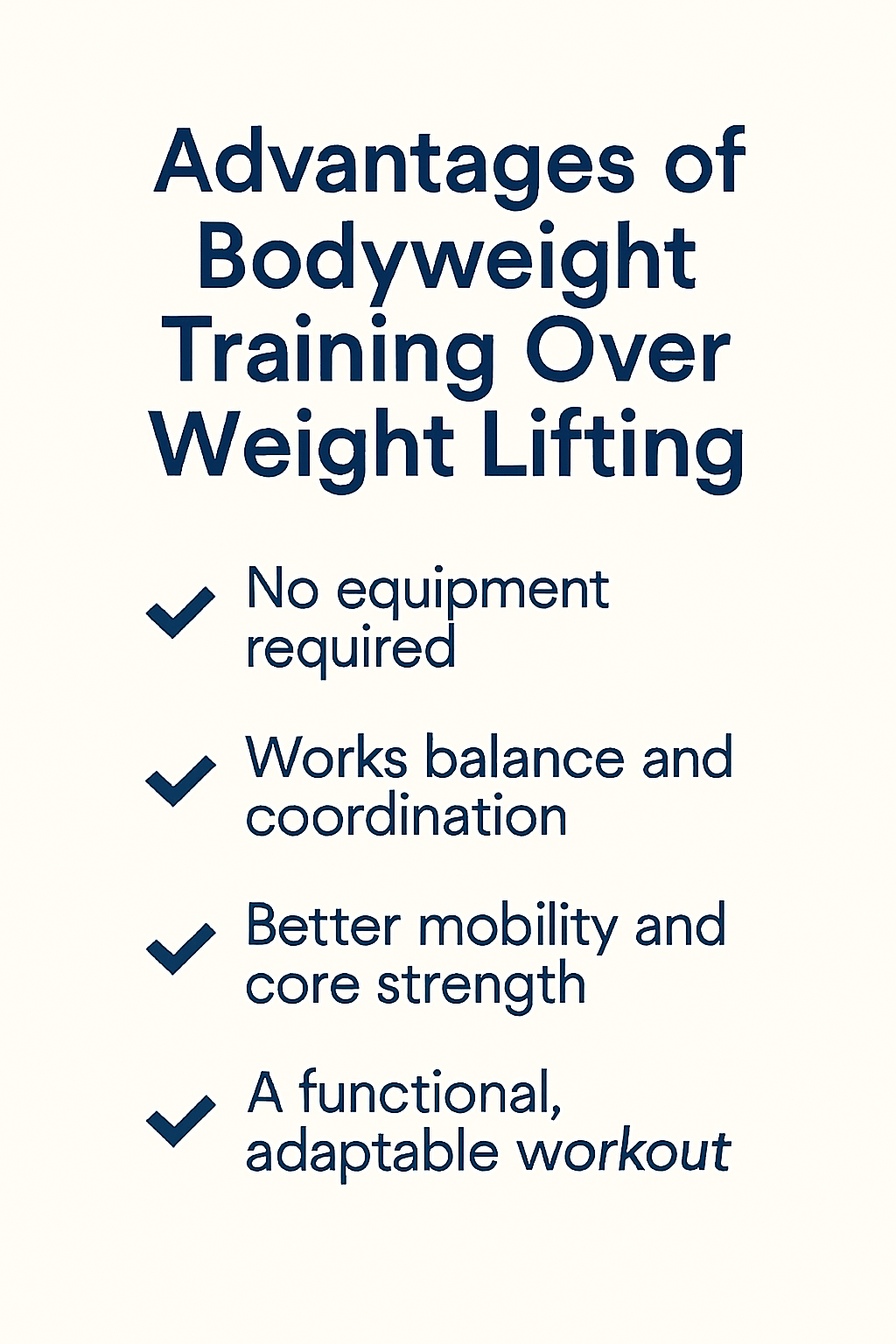
🏋️ Full-Body Bodyweight Workout Table
| Category | Beginner Variation | Progression Variation | Advanced Challenge |
|---|---|---|---|
| Push | Standard Push-Ups (10–15 reps) | Decline Push-Ups | Archer Push-Ups / One-Arm Push-Ups |
| Legs | Bodyweight Squats (15–20 reps) | Bulgarian Split Squats | Pistol Squats |
| Pull | Assisted Pull-Ups / Negatives | Standard Pull-Ups (5–8 reps) | Weighted Pull-Ups / One-Arm Pull-Ups |
| Core | Plank (30–60 sec) | Side Plank with Leg Lift | Hollow Body Hold / Dragon Flag |
| Hips/Glutes | Glute Bridge (12–15 reps) | Hip Thrusts (floor-based) | Single-Leg Glute Bridge / Hip Thrust Progressions |
Mastering the Basics: Key Full-Body Bodyweight Exercises
Before progressing, ensure you’ve mastered the foundational movements. Here are the key exercises and benchmarks to assess your readiness for progression, remember, you start at whatever level you are at, then, with consistency, move upward.
1. Push-Ups
- Beginner: Standard push-ups (aim for 10-15 reps with perfect form).
- Progression: Decline push-ups or archer push-ups once 15 reps feel easy.
- Tip: Perfect form means keeping your core tight, lowering your chest to just above the ground, and avoiding sagging hips.
2. Squats
- Beginner: Bodyweight squats (aim for 20-25 reps).
- Progression: Bulgarian split squats or pistol squats when you can maintain balance and depth.
- Tip: Focus on keeping your weight in your heels and your knees tracking over your toes.
3. Pull-Ups
- Beginner: Assisted pull-ups or negatives (build to 5-8 reps).
- Progression: Standard pull-ups, then work toward one-arm pull-ups or weighted pull-ups.
- Tip: Use full range of motion, pulling your chest to the bar and lowering fully.
4. Core Work
- Beginner: Plank (hold for 30-60 seconds) or dead bugs.
- Progression: Side planks with leg lifts or hollow body holds.
- Tip: Engage your core by pulling your belly button toward your spine.
5. Hip Hinge / Glute Bridge
Targets hamstrings, glutes, and lower back — the “posterior chain” that squats don’t fully cover.
Glute bridges or hip thrusts (floor-based, no equipment)
🏠 Looking for more bodyweight routines? Explore our Calisthenics for Beginners at Home guide for simple, effective workouts you can do anywhere.
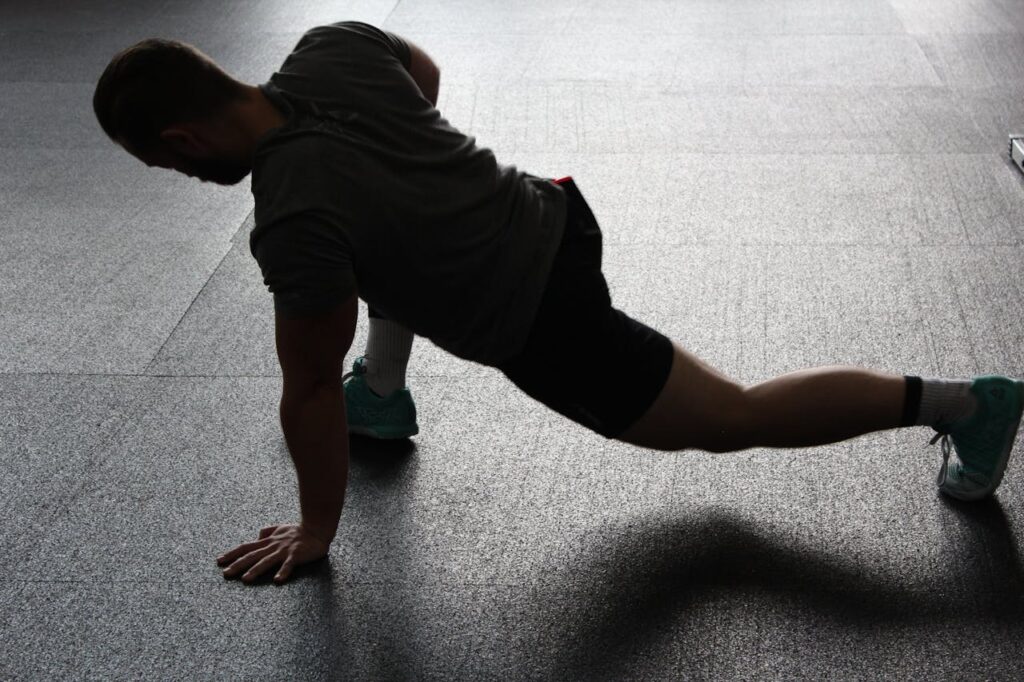
How to Know When to Advance
Progression is key to building strength and avoiding plateaus. Here’s how to know when to take it to the next level:
- Perfect Form: You can perform the current exercise variation with flawless technique for the recommended reps.
- Consistency: You’ve consistently hit your rep goals for 2-3 weeks without it feeling overly challenging.
- Control: You can complete each movement with control, avoiding momentum or “cheating” to get through reps.
📈 Not sure when to level up your bodyweight training? Check out this guide from Calisthenics 101 to learn how to spot the right time to advance your full-body routine.
Testing Your Readiness
- Push-ups: Can you do 15+ with perfect form? Time for archer push-ups.
- Squats: Can you hit 25 reps easily? Try Bulgarian split squats.
- Pull-ups: If 8 pull-ups are a breeze, consider weighted pull-ups.
- Planks: Holding a plank for 90 seconds? Try hollow body holds.
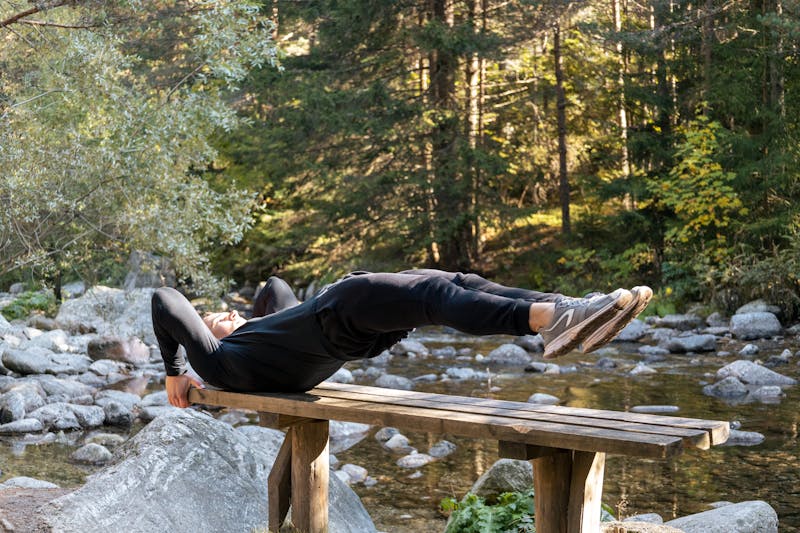
Progression-Focused Full-Body Workout Plan
Here’s a step-by-step plan to structure your workouts as you progress:
Day 1: Push Focus
- Standard Push-Ups: 3 sets of 10-15 reps (progress to decline push-ups as needed).
- Dips (using a sturdy chair): 3 sets of 10-12 reps.
- Plank: Hold for 60 seconds (progress to side planks as needed).
Day 2: Pull Focus
- Assisted Pull-Ups: 3 sets of 6-8 reps (progress to full pull-ups).
- Inverted Rows (use a sturdy bar): 3 sets of 8-10 reps.
- Dead Bug Core Exercise: 3 sets of 12 reps.
Day 3: Lower Body
- Bodyweight Squats: 3 sets of 20 reps (progress to Bulgarian split squats).
- Glute Bridges: 3 sets of 12-15 reps.
- Hollow Body Hold: 3 sets of 20 seconds (increase duration as you improve).
Day 4: Active Recovery
- Light stretching or yoga.
- Walking or light cardio.
Day 5: Full-Body Challenge
- Circuit: 3 rounds, no rest between exercises, 2-3 minutes rest between rounds.
- Push-Ups: 10-12 reps.
- Pull-Ups: 6-8 reps.
- Bodyweight Squats: 15 reps.
- Plank: 30 seconds.
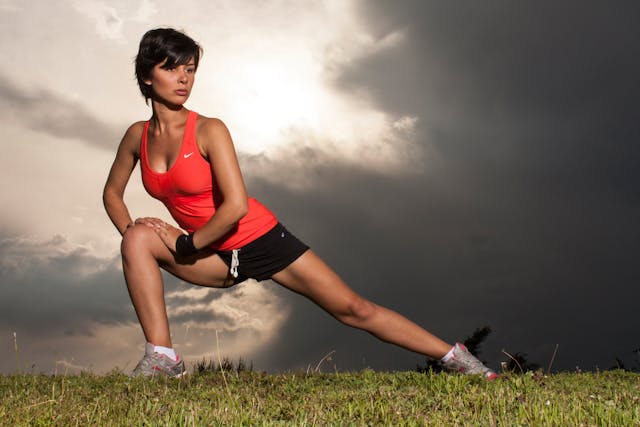
Tracking Your Progress
Keep a workout journal to track:
- Reps and sets completed.
- Variations attempted.
- Notes on form and control.
Tracking helps you recognize when it’s time to progress and keeps you motivated by showing tangible improvements.
🏋️♂️ Want to get the most out of bodyweight training? Check out Libertas Fitness: Maximizing Strength Gains for smart strategies to boost results without lifting weights.
Conclusion
Bodyweight workouts are versatile, scalable, and effective for building strength at home. By focusing on progression, you’ll ensure consistent growth, avoid plateaus, and stay motivated. Start with the basics, track your progress, and challenge yourself to move to the next level when you’re ready.
Your next step: Begin this dynamic full-body progression plan and unlock your strength potential!

🔥 Gear to Help You Achieve Your Health and Fitness Goals 💪
If you’re looking for tools to enhance your fitness journey, check out this. Explore top-rated fitness gear on Amazon to enhance your workouts. Check out the latest picks here! 🛒 to support your workouts and progress.
🚀 Find equipment designed to boost strength, endurance, and overall performance!
⚠️ Short disclaimer: As an Amazon Associate, I earn from qualifying purchases.
❓ Full-Body Bodyweight Workout FAQ
🔥 What makes a full-body bodyweight workout truly effective?
- Targets all major muscle groups in one session
- Combines strength, mobility, and core stability
- Boosts metabolism without equipment or gym access
🧠 Can I build real strength with just bodyweight exercises?
- Absolutely. Progressive overload can be applied using:
- Slower reps
- Increased sets or volume
- Advanced variations (e.g., archer push-ups, pistol squats)
- Bodyweight training develops functional, joint-friendly strength
⏱️ How long should a full-body bodyweight workout take?
- Most routines can be completed in:
- 20–35 minutes for beginners
- 40–60 minutes for intermediate/advanced
- The Dynamic 5 Step Plan is time-efficient by design
🛋️ Can I really train my whole body at home with no equipment?
- Yes! With smart programming, you can target:
- Legs (squats, lunges, glute bridges)
- Upper body (push-ups, dips, wall walks)
- Core (planks, leg raises, hollow holds)
- All achievable with zero gear and minimal space
📈 How do I make progress without lifting weights?
- Master your body’s resistance through:
- Exercise progressions
- Tempo control (slow negatives)
- Volume increases
- Isometric holds and explosive reps
🔄 Is it safe to do full-body bodyweight workouts daily?
- It depends on intensity and recovery. Consider:
- Alternating focus (e.g., upper/lower/core)
- Using active recovery days
- Listening to your joints and energy levels
- 3–5 days/week is ideal for most people
👊 Can this plan help with fat loss too?
- Yes, when paired with proper nutrition. Bodyweight workouts:
- Burn calories through compound movements
- Boost afterburn (EPOC) with HIIT or circuits
- Support lean muscle retention
🧘♂️ What about flexibility and mobility?
- Many bodyweight moves naturally improve:
- Joint range of motion
- Core control and posture
- Dynamic flexibility (e.g., lunges with reach, deep squats)
💥 What if I hit a plateau?
- Shake things up with:
- Time-under-tension sets
- Skill-based goals (handstand push-ups, shrimp squats)
- Combining cardio bursts (jump squats, mountain climbers)
🌟 Who is the Dynamic 5 Step Plan best for?
- Ideal for:
- Beginners wanting structured progression
- Busy professionals needing efficient workouts
- Athletes seeking functional strength at home
- Anyone aiming for a no-excuses full-body routine
For the Spirit God gave us does not make us timid, but gives us power, love, and self-discipline. – 2 Timothy 1:7

